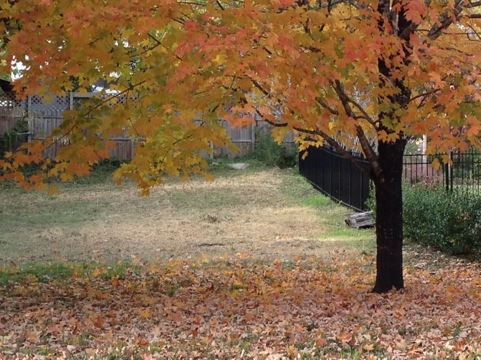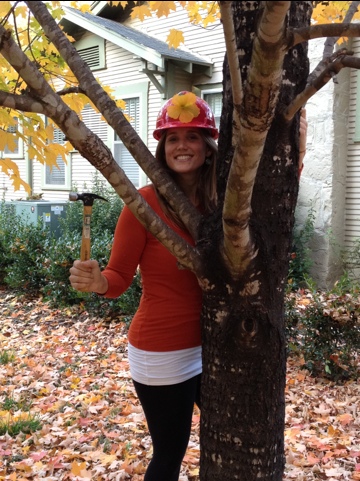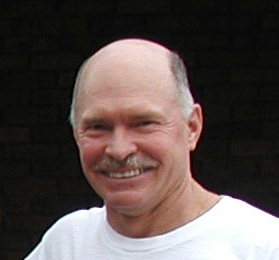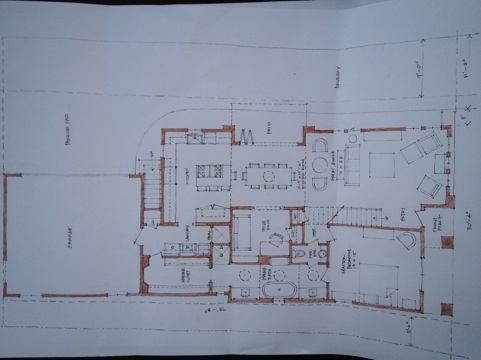
The Avondale property in Fall
Aggressively passive (according to urban dictionary): when someone goes out of their way to be passive
I pondered for some time what the title of this blog should be. I wanted to document the process of building a Passive House on the lot that I recently purchased in the historic Avondale neighborhood of Birmingham, AL. As I did more research, I was surprised at how simple and affordable it could be to incorporate sustainable practices into our buildings and lifestyles, so I thought I could share those ideas with other people as I learned more about them myself. I wanted the blog to serve as a resource for people who were interested in applying these principals to their own projects. But I also knew this project was symbolic to me in ways that went beyond the actual building process, so I wanted to encompass what it meant to me personally as well.
For years now, I’ve wanted to find ways to live a simpler, more peaceful life. On one hand, my life is secure, fun and adventurous with exponentially more comforts and opportunities than many people throughout history. I’m surrounded by many loving and supportive people, and it’s important for me to remember how fortunate I am.
But I also realize that, ironically, in search of simplicity, I’ve made a rather complicated life for myself. I work full-time as a freelance Spanish interpreter for different companies and hospitals. I also manage 4 rental properties, own a small (tiny) construction business and teach a weekly swing class. So by the time I do those things, take care of my own house, try to maintain a social life and contact with loved ones, and then somewhat take care of myself, there aren’t nearly enough hours in the day (which I’m sure is quite a common experience!). I’m a professional multi-tasker that runs around setting things in motion and then tries to play catch up. I often feel an undercurrent of anxiety pushing me frantically towards some unknown destination, and I’m tired of trying to keep up.
So the more I thought about it, the more this title applied to both my house and my life in general. I hope to be proactive about creating a comfortable, relaxing life, full of things I love with very few I don’t. I want to work efficiently and smarter, making money in ways that embody what I value most, increasing the amount of passive income that I have, and doing it in a way that benefits the world around me. Money is important only because of the freedom and security that it brings me. Freedom, security and love are the most important things to me, and it’d be great to know what it’s like to have plenty of those things and more, including time.
It’s a lofty ambition, but I believe it’s possible. Up until now, I have lived thinking that the only way to be successful was to work crazy hard, under a lot of stress. I live based on the self-limiting beliefs that there will never be enough time or money. So I’ve set out to prove myself wrong. As Marc Allen suggests in his book The Millionaire Course, I’m going to “make a compromise with my doubts and fears”, make my life the subject of my own experiment, and see where it takes me.
Building this home is one step in that direction. I want an extremely energy efficient, well-built home that is also beautiful and comfortable, providing everything I need and enjoy on a regular basis without anything that doesn’t matter to me. I want to build with an understanding of the interconnectedness of things, without unnecessarily depleting natural resources or damaging our environment, recognizing that it’s all part of something larger than myself.
I’m estimating that it will cost about half as much as my current house to build, and my utilities will be about 1/3 of my current utility costs. I will also be less than two miles from Children’s hospital where I do most of my work and only a mile or so from most of my social life, which should take about another $150 off what I spend in gas and decrease car maintenance costs. These things combined should cut my total monthly expenses in about half, which means I could work half as many hours, leaving more time for other things that matter to me!
I’ve started working with an architect, who is a wonderful and talented friend of mine. We’re working on some schematic floor plans right now, and soon I will start posting about the different design options.
The home will be based on the specifications established by the Passive House Institute. It’s the strictest standard on the market for energy efficiency, and as far as I know, this will be the first Passive House in Alabama! Here’s a link if you’re interested in learning more about the Passive House Institute. You can click on What is a Passive House? for a complete definition. I’ll also elaborate more on the details of the home itself in future posts.
www.passivehouse.us
Energy efficiency is only one aspect of green building, so I plan to incorporate other aspects as well, such as the use of sustainable building materials, water conservation, rain water collection, and protecting the indoor air quality.
In the next few posts, I’ll be talking more about my background and introducing you to the marvelous people who will be working with me. I will also be looking for salvage and reclaimed materials and people who are interested in participating in the project. I hope to have a story published on the house and would love to find any companies or individuals willing to provide materials or services at a discount in exchange for advertising and exposure. So if you know of any resources, I’d love to hear about them!
There are still many unknowns, and I’m not sure yet how they will resolve themselves. Financing could be a challenge. I need to either sell my current home, or find a way to raise $120,000. It’s difficult to get bank financing right now, so if you see me on the side of the road with some Krispy Kreme doughnuts, stop and buy a few boxes!







